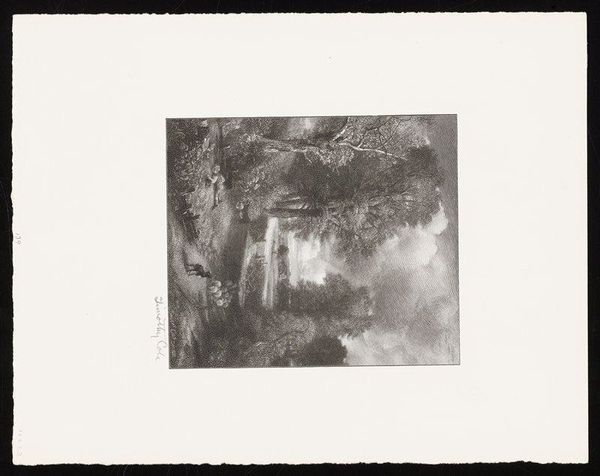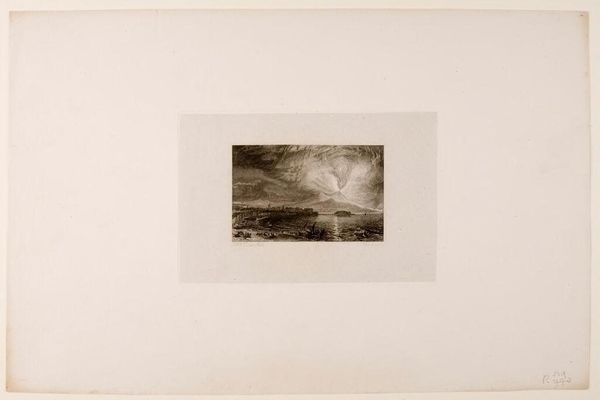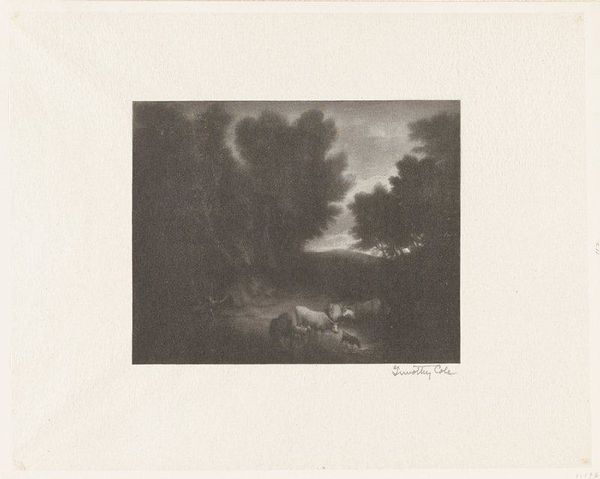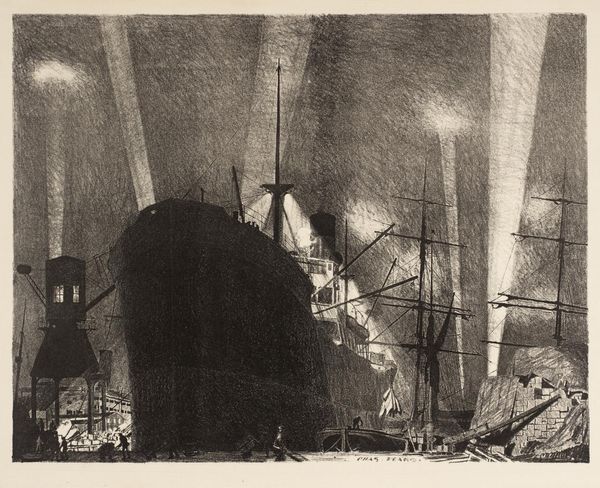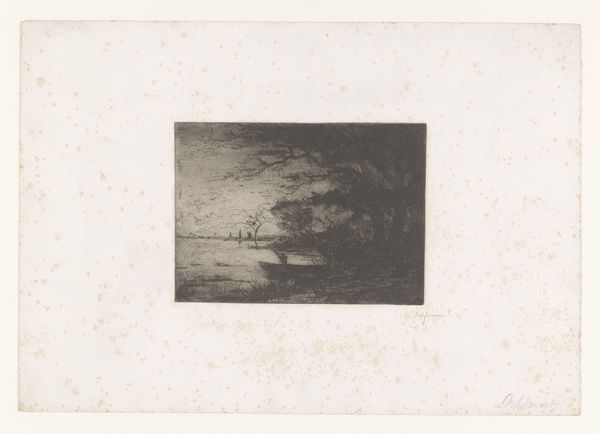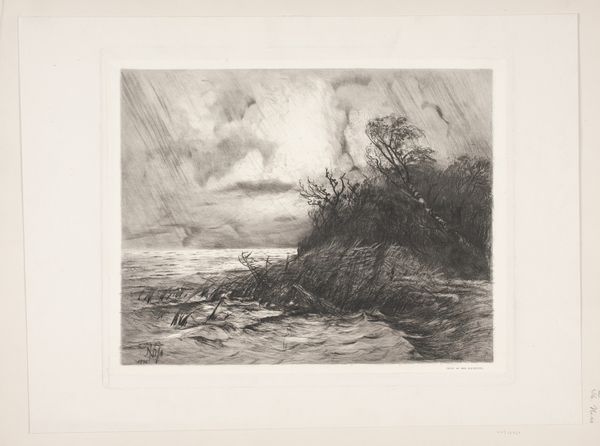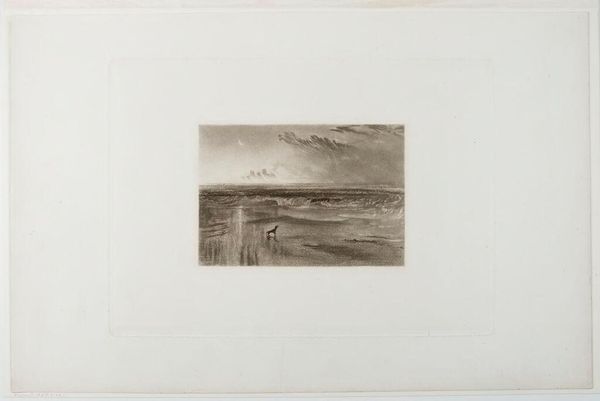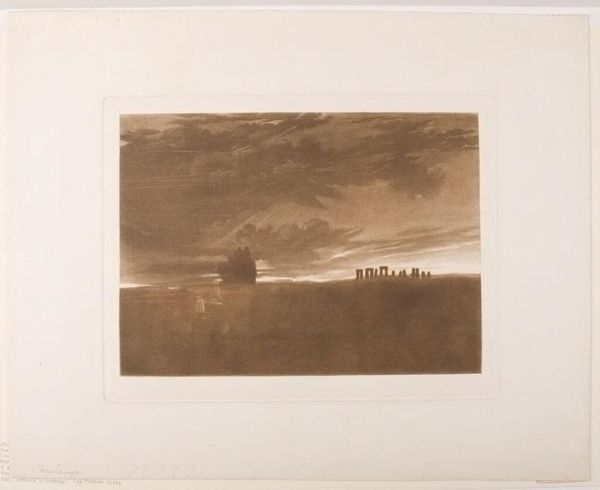
Dimensions: 5 1/8 x 7 1/8 in. (13.02 x 18.1 cm) (image)9 1/2 x 12 1/8 in. (24.13 x 30.8 cm) (sheet)
Copyright: No Copyright - United States
Editor: Here we have Timothy Cole's "Ulysses Deriding Polyphemus," created around 1900, a wood engraving. The scene feels dramatic and turbulent. What do you make of this piece? Curator: Well, from a materialist perspective, the first thing I notice is that this is a reproduction, not an original painting. Cole was a master wood engraver known for reproducing paintings. So we are looking at the labour involved in translation and dissemination, rather than direct artistic creation. Consider the skill required to translate the effects of light and shadow from a painting into the lines and textures of a wood engraving. What is lost and gained in that process? Editor: That's fascinating! I hadn't considered it as a form of translation. How did the medium influence its reception? Curator: Absolutely. These engravings made art accessible to a wider audience through mass reproduction. Think about how this changes the context of viewing. Instead of exclusive galleries, this image would circulate in books and periodicals. Who had access to the original painting versus the woodcut? How might that affect the reading of the narrative depicted? The consumption of art shifts from the unique auratic experience to something far more democratic and intertwined with the structures of print culture. Editor: So the engraving itself becomes a comment on the art market of the time? Curator: Precisely! It highlights the means of production, labour, and the social context of art consumption. This also speaks to anxieties about originality and authorship during this era. Editor: That completely changes my view of the print! I’ll definitely look at art reproductions differently now. Thanks! Curator: My pleasure. Remember, materiality is always embedded in larger economic and social systems, and by analyzing the art's production and circulation, we are getting closer to a holistic comprehension.
Comments
No comments
Be the first to comment and join the conversation on the ultimate creative platform.


